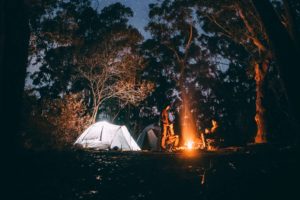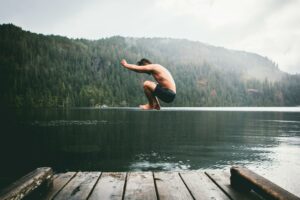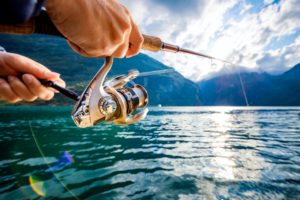Campers always have to arrive at their destination prepared and ready for anything. However, camping checklists may fluctuate depending on the season. Seasonal campers will be aware of the differences in their packing lists based on the time of year. If you are a first time fall camper, or simply want a refresher on what to bring on your next trip, here is a complete fall camping checklist sure to make your camping trip safe and enjoyable.
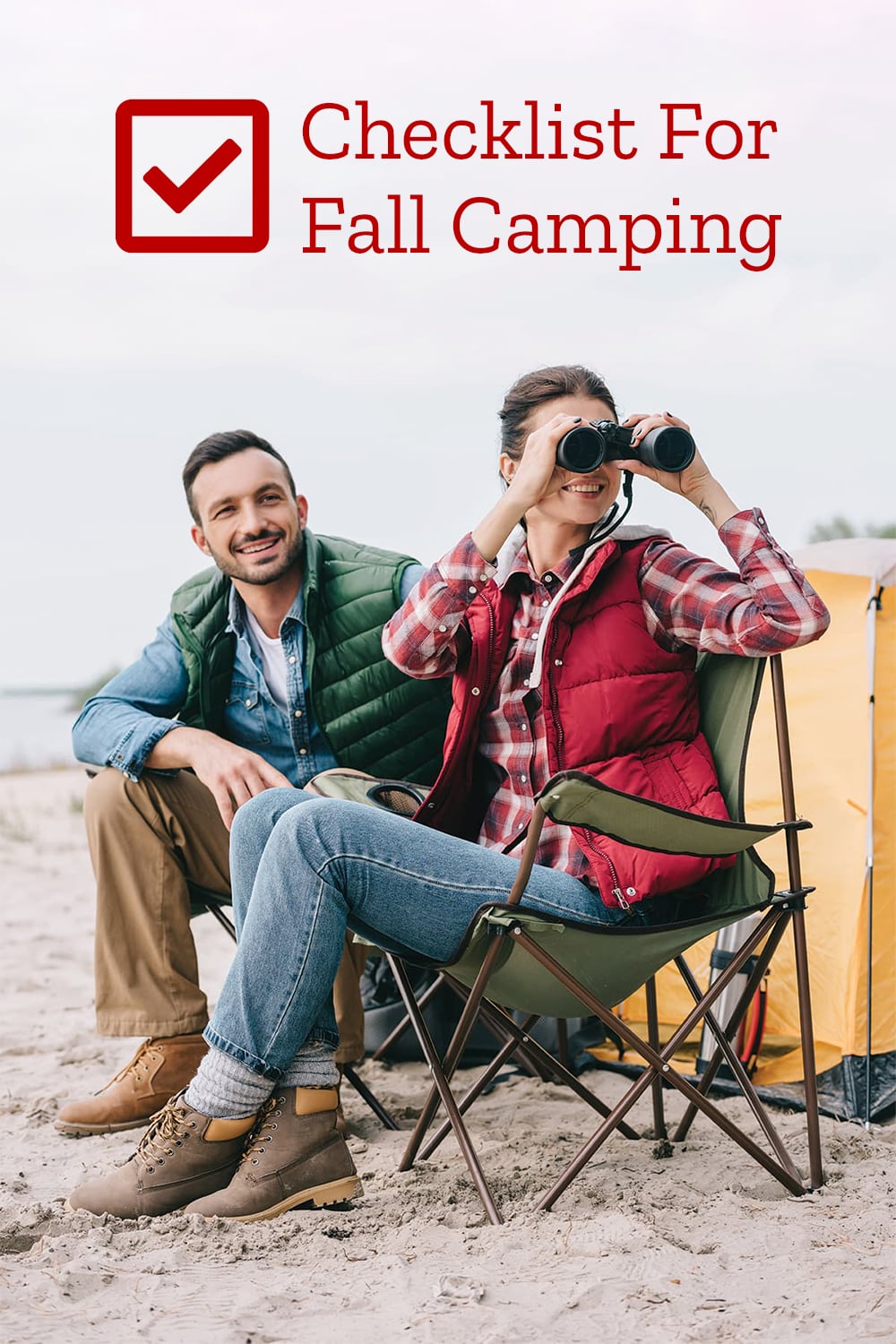
Clothing
When packing clothing for a fall camping trip, it is important to consider the fact that you will need to pack for warm days and cool evenings. This means that layering is extremely important.
The amount of each clothing item is up to you and can differ based on how long you are planning your trip.
- One t-shirt per day: great to wear at night, or add under a button up for extra warmth.
- A few long sleeve shirts: a cozy button up is great to pack as it allows for a lot of layers.
- Fleece: this is perfect for sitting around the fire and keeping you warm at night.
- Breathable pants or leggings: you can wear these while you sleep or underneath hiking pants as a base layer.
- Short sleeve compression shirt or tank top: great as a base layer for hiking trip or for sleeping.
- A few pairs of wool socks: keep very dry and in a plastic bag in your backpack. Great for fall nights.
- Hiking pants: water-resistant.
- Rain jacket: water-resistant and light weight.
- Hiking boots
- Beanie or warm hat
- Underwear
- Gloves: important to pack in case weather is very cold.
- Bandana: can be used as a scarf or as a headband.
- Shoes: pack a couple pairs of lightweight shoes depending on how long you will be camping.
- Rain poncho: fall weather can be unexpected. Be ready for unexpected rainfall.
- Baseball cap: important for sun exposure during the day.
- Bathing suit
- Life jacket
- Insulated vest
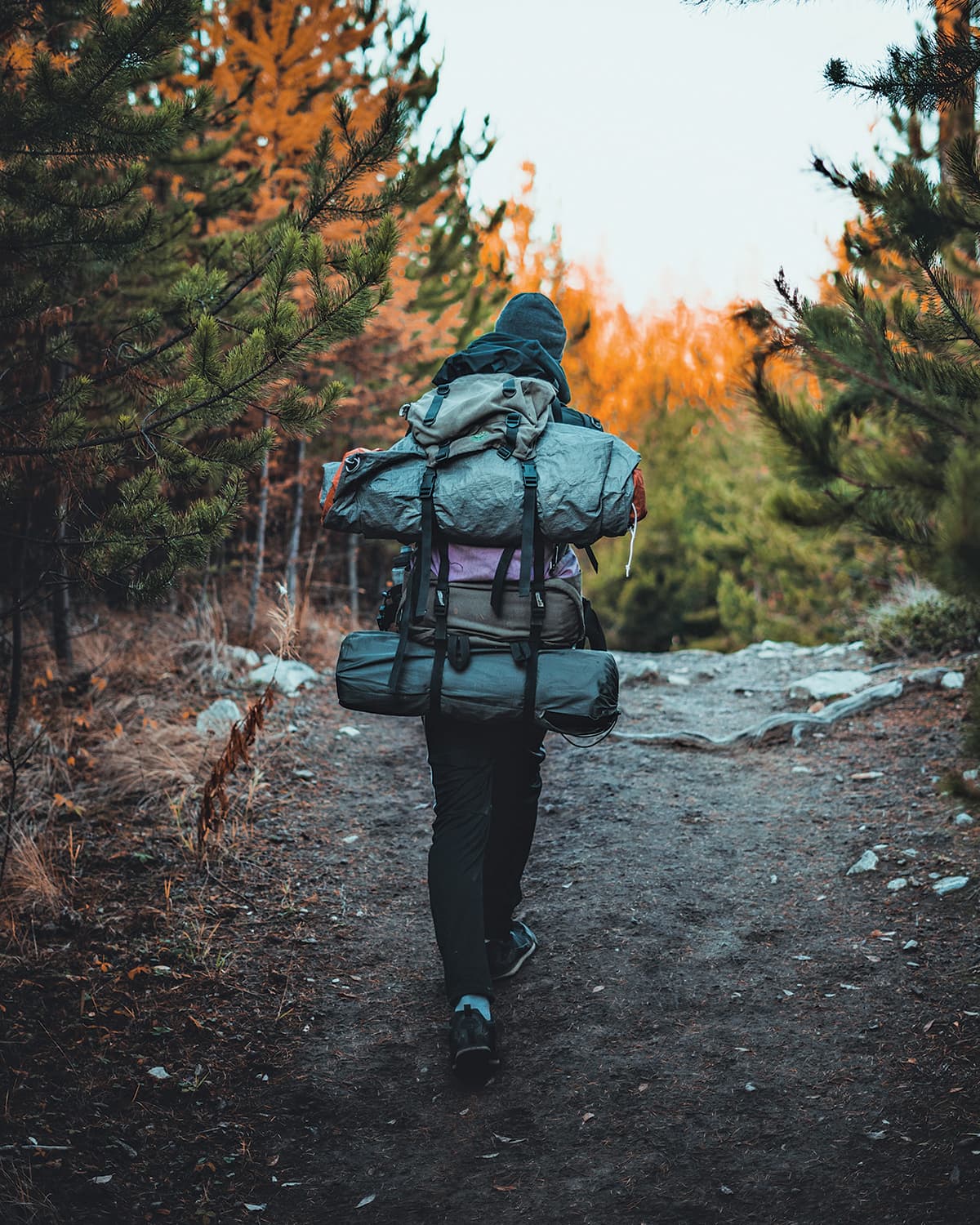
Personal
- Toilet paper
- Baby wipes
- Face wipes
- Tissue paper
- First aid kit: come prepared with a first aid kit full of necessary items. Make sure you go through each item before you leave and always come prepared for any possible injuries.
- Toothbrush/toothpaste
- Shower shoes/flip flops
- Towel
- Washcloth
- Soap
- Shampoo
- Feminine products
- Deodorant
- Comb/brush
- Razor
- Sunscreen
- Lip balm
- Sunglasses
- Books/magazines (like the Trailer Parks Canada magazine!)
- Cards/games
- Bug spray
- Other personal items
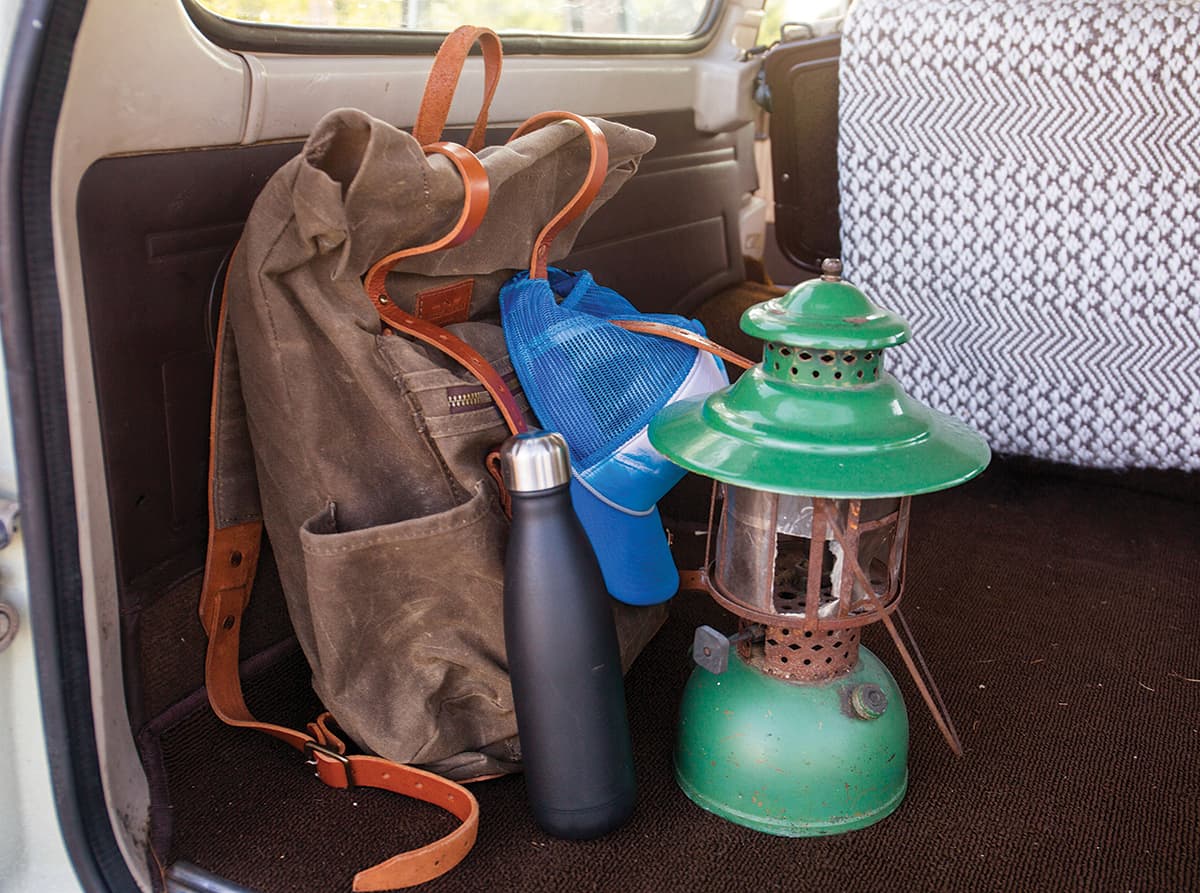
Gear
The gear that you pack depends on what kind of camping you are doing. Tent camping is very common and might require more gear than someone who is camping in an RV. Regardless of how you are camping, many of these items are very important to bring.
- Backpack: pack all of your heaviest items on the bottom. This will place the bulk of the weight on your hips, and protect your back when traveling for a long distance.
- Three season tent
- Ground cloth
- Tarp: important for the unexpected weather changes of fall. Will protect the inside of your tent from moisture that can seep in.
- Extra stakes: you never want to be caught on a camping trip missing stakes. This is why extras are very important.
- Shade tarp: optional and common for camping with a larger group.
- Axe: very important for splitting firewood.
- Mat for tent entrance: keeps the inside of your tent clean.
- Three season sleeping bag: make sure you pack a high-quality sleeping bag that will keep you warm.
- Sheets/blankets: you can never have enough of these for a fall camping trip.
- Pillow
- Air mattress/sleeping pad: try your best to not be sleeping on the cold ground. This could result in a chill.
- Packable chair
- Portable grill
- Matches/lighter
- Flashlight/lantern
- Extra batteries
- Compass/GPS
- Whistle: important for safety on a hiking trip
- Camera: for capturing a beautiful sunset on a hiking trip or snapping a family photo by the campfire.
- Maps
- Fishing gear
- Hot water bottle: provides extra warmth while sleeping.
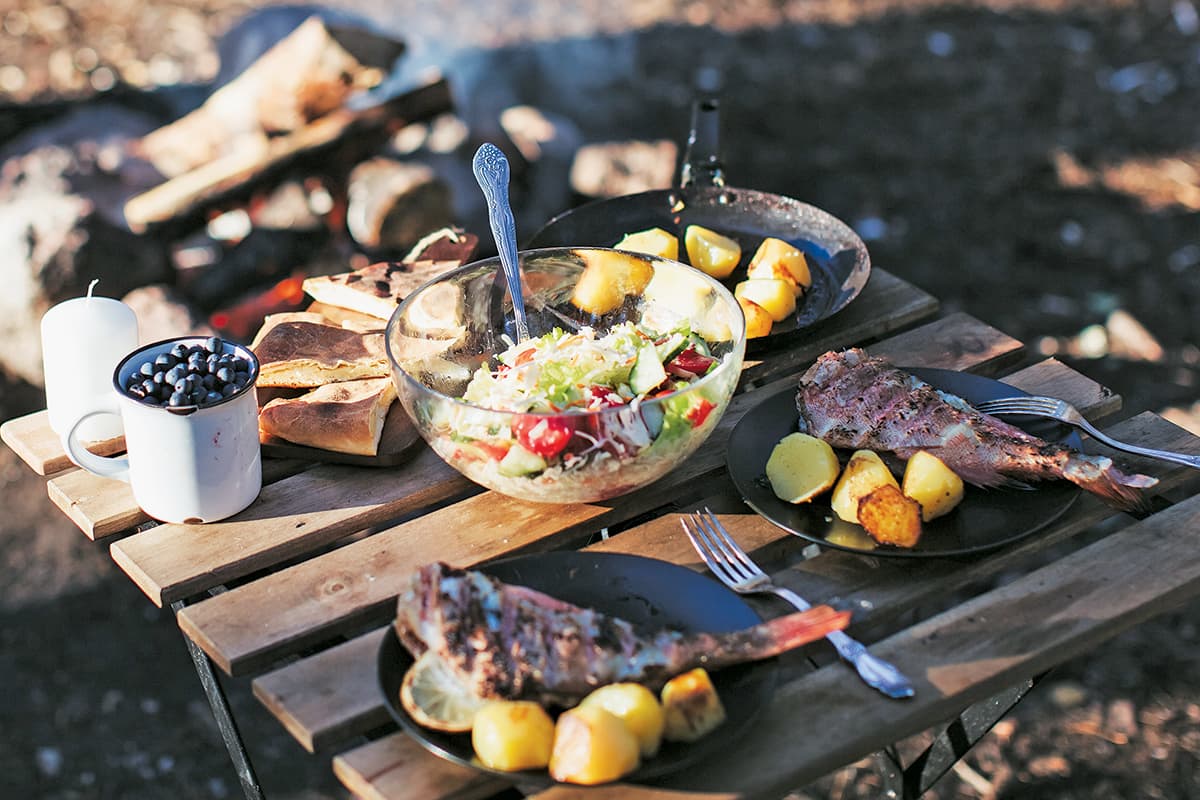
Cooking
Everyone loves a meal by the campfire. Make sure you don’t get stuck without some necessary ingredients or tools. For fall camping, your meals should be warm and filling. Plan each meal with the proper amount of food before you head out to your camping destination.
- Large water jugs: Bring a lot of water.
- Reusable water bottles: make sure that you have an insulated high-grade water bottle. You will need this for hiking and basically all other camping activities.
- Coolers/ice
- Water boiler
- Instant coffee
- Drying rack
- Knife
- Cutting board
- Pots and pans: dependent on what you are planning to eat.
- Table cloth
- Plates and bowls
- Silverware/plastic cutlery
- Measuring cups
- Heavy duty aluminum foil: great for cooking over a campfire and storing food. This is a camping necessity.
- Paper towel
- Trash bags
- Dish soap
- Clothespins
- Cooking oil
- Containers for food storage
- Tongs
- Skewers
- Folding table: needed unless campground has picnic table. Otherwise great extra space for cooking.
- Mugs/paper cups
- Resealable plastic bags
- Napkins
- Dish rags
- Scrub pad
- Seasonings
- Granola bars/snacks: always bring some extra snacks. With all of the outdoor activity you will be doing, it is always important to have some extra fuel.

